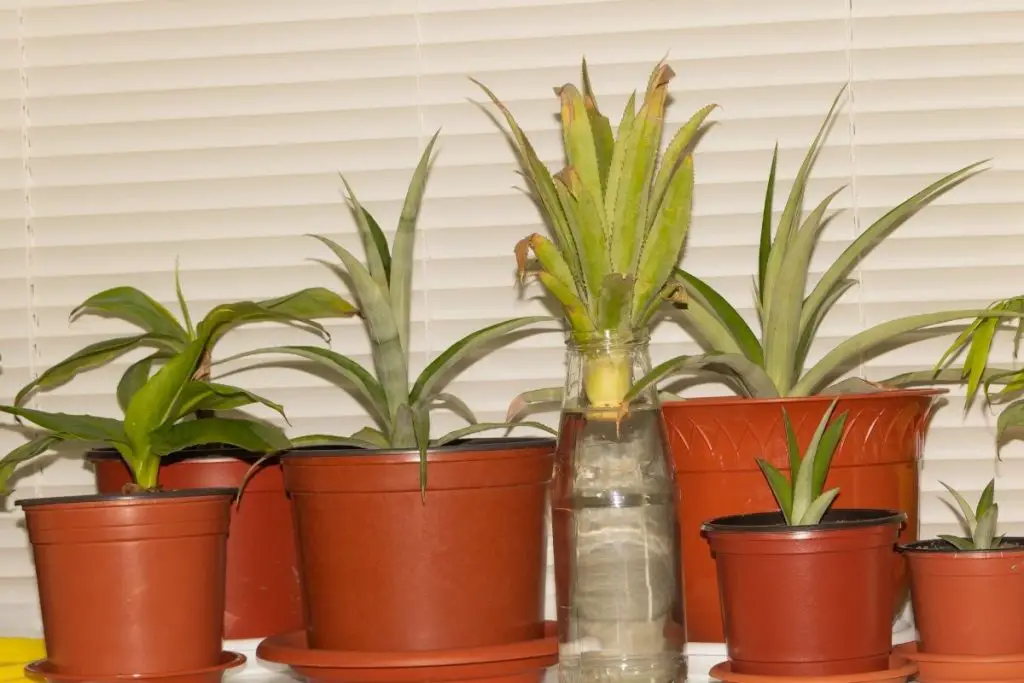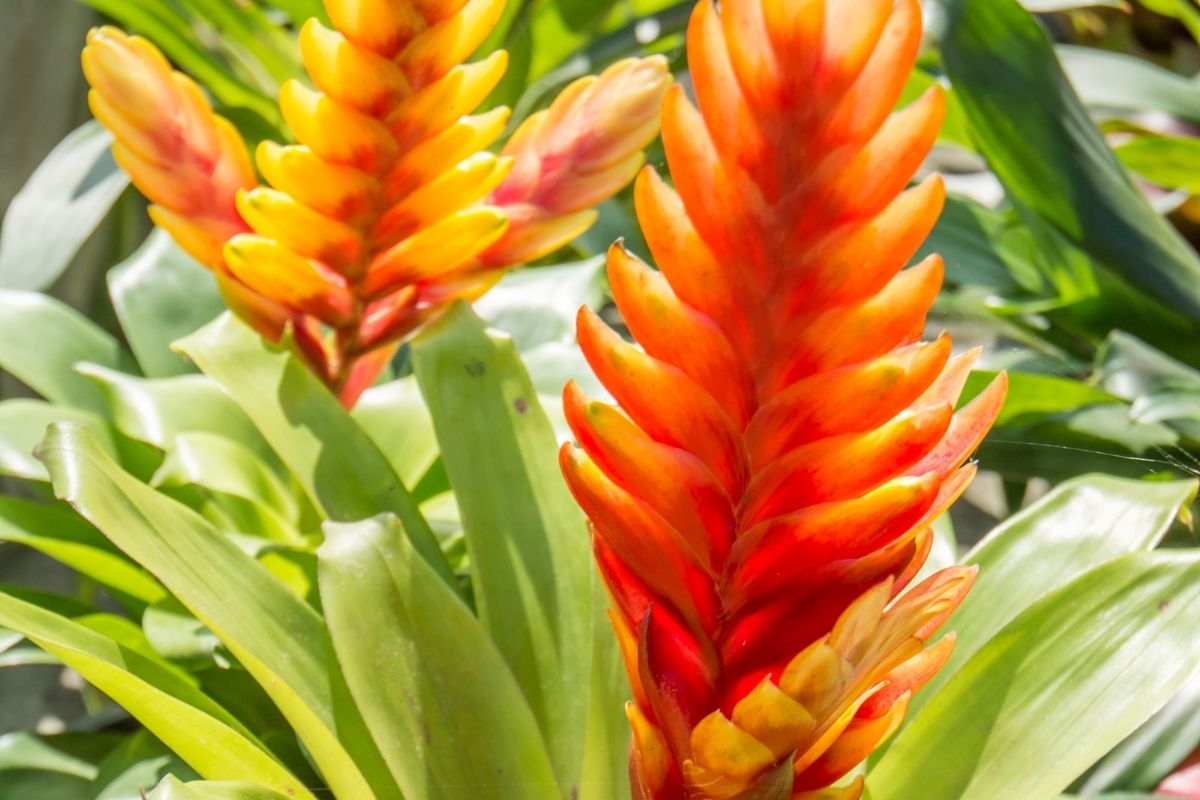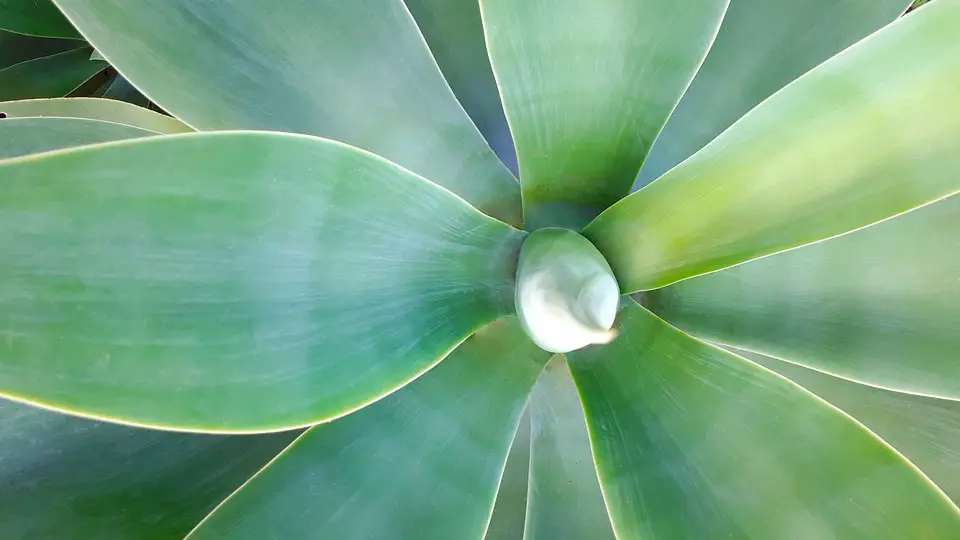It is easy to grow an attractive pineapple plant from a shop bought fruit.
With some careful preparation and by following a few simple steps you can have a healthy pineapple plant which, if given enough time and the right conditions could provide you with fruit in the future.
The easiest way to grow a pineapple from its top is to choose a fresh pineapple from the store, take it home and cut the top off the fruit – leaving some flesh on the top.
You can then either root the top in water or in a pot of compost.
How to grow pineapples from pineapple tops
There are two ways that you can produce a pineapple plant from a top.
For both you’ll need to cut the top off the pineapple, leaving about half an inch of fruit on the top.
Trim the leaves down until you can see the buds in between the stems.
You then need to leave the top to dry out for a few days to prevent it from rotting, you can place it in a dish on a sunny windowsill to do this.
Getting pineapple tops to grow
You can place the pineapple top in a shallow dish of water ( such as a saucer or plate).
Leave the top in a warm, shaded place, and watch for roots developing.
You will need to make sure that the water stays topped up and watch for signs of the top rotting.
As soon as you see visible roots you can transfer the top to a pot of compost.
Another method is to plant the top in a light, sandy compost.
Plant the top in the compost and cover it until the compost is almost up to the leaves.
Give it a good water and place in a light, warm place, but not direct sunlight.
It will take some time before roots develop (about 2 months).
Growing your pineapple plants
Once you have a pineapple plant the next stage is to give it all the conditions that it needs to grow properly.
Ideally, you want a warm, sheltered place where your pineapple plant will get plenty of sunlight. It can be grown indoors or outdoors.
Your plant should get at least 6-8 hours of sun each day. Pineapple plants should be kept in a sunny place.
A good rule of thumb is to take the average minimum temperature in your area during winter and add 10 degrees to it.
For example, if the lowest temperature in your area is 25F, you would want to keep your pineapple plant in a spot where the temperatures will not drop below 35F.
You must make sure that your plant gets plenty of light and warmth, it should not be allowed to dry out either.
The soil that you use for your pineapple should be sandy with a good amount of organic matter included.
Do not let the compost become too wet though as this will rot the roots of the plant.
Watering once a week usually does the trick, but also check on top of the pot after watering to see if is still moist, if it’s not then water some more until you are sure that all the compost is damp but not soggy.
If growing outside, choose an open place where wind won’t affect it so much and try to keep it away from the worst of the summer sun.
Feeding your pineapple plant
Fertilize your pineapple plant every one to two weeks with a balanced fertilizer or compost tea as this will give it a boost and help strengthen its root system.
Pineapples are not heavy feeders so you do not need to worry about over-feeding it.

Getting your pineapple plant to flower
Pineapple plants grow slowly and it could be two to three years before your plant produces any flowers, in some cases it could be much longer.
One way to encourage flowering is to feed your plant with a good houseplant fertilizer that is high in phosphorous.
Something such as JR Peters Blossom Booster would be a good choice.
Getting your pineapple to fruit
The most important thing when growing pineapples is warmth.
Your plant will not produce any fruit if it isn’t kept warm enough, around 70F is ideal and anything below that can cause it to stop fruiting for up to twelve months.
Pineapples also need lots of sunlight in order to set fruit properly.
If you have a greenhouse or some other suitable structure make sure that you place the plant there so the roots can get the warmth they require and put a glass roof on top to keep out those cold winds.
It’s worth noting that although pineapples are members of the bromeliad family, they are not particularly fussy about their soil.
However, if you can grow orchids, then you should be able to grow pineapples too.
Soil
The best soil type for growing pineapples is a sandy loam with plenty of organic matter and compost added in.
The pH level should be slightly acidic, but don’t worry about this as your plants will adapt to whatever conditions they need to in order to thrive.
Final Words
In conclusion, growing pineapples at home is not nearly as difficult as it may sound and if you can grow an orchid successfully, you should be able to grow a pineapple plant too.
So long as the roots get everything they need in terms of warmth, water and nutrition there’s no reason why your plant shouldn’t thrive and reward you with delicious fruit that can be added to all sorts of dishes for a really tropical taste .




